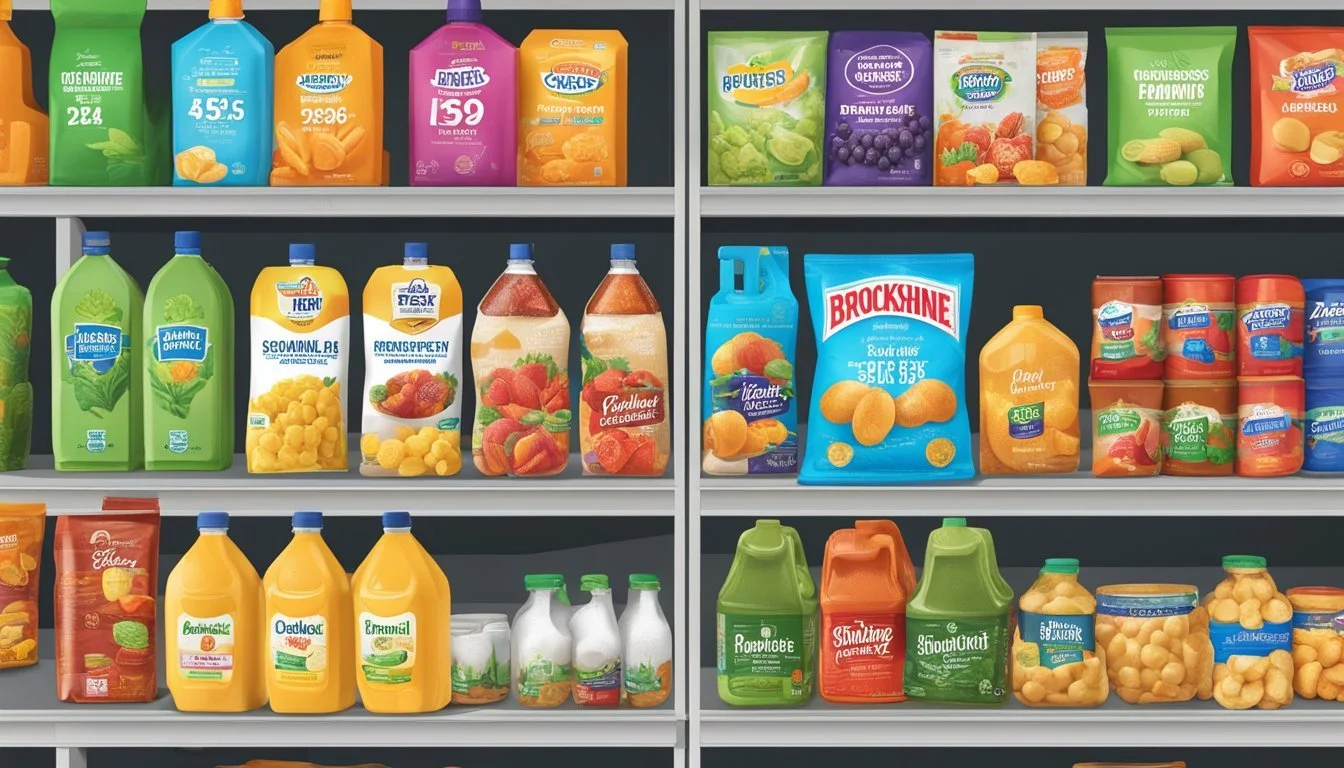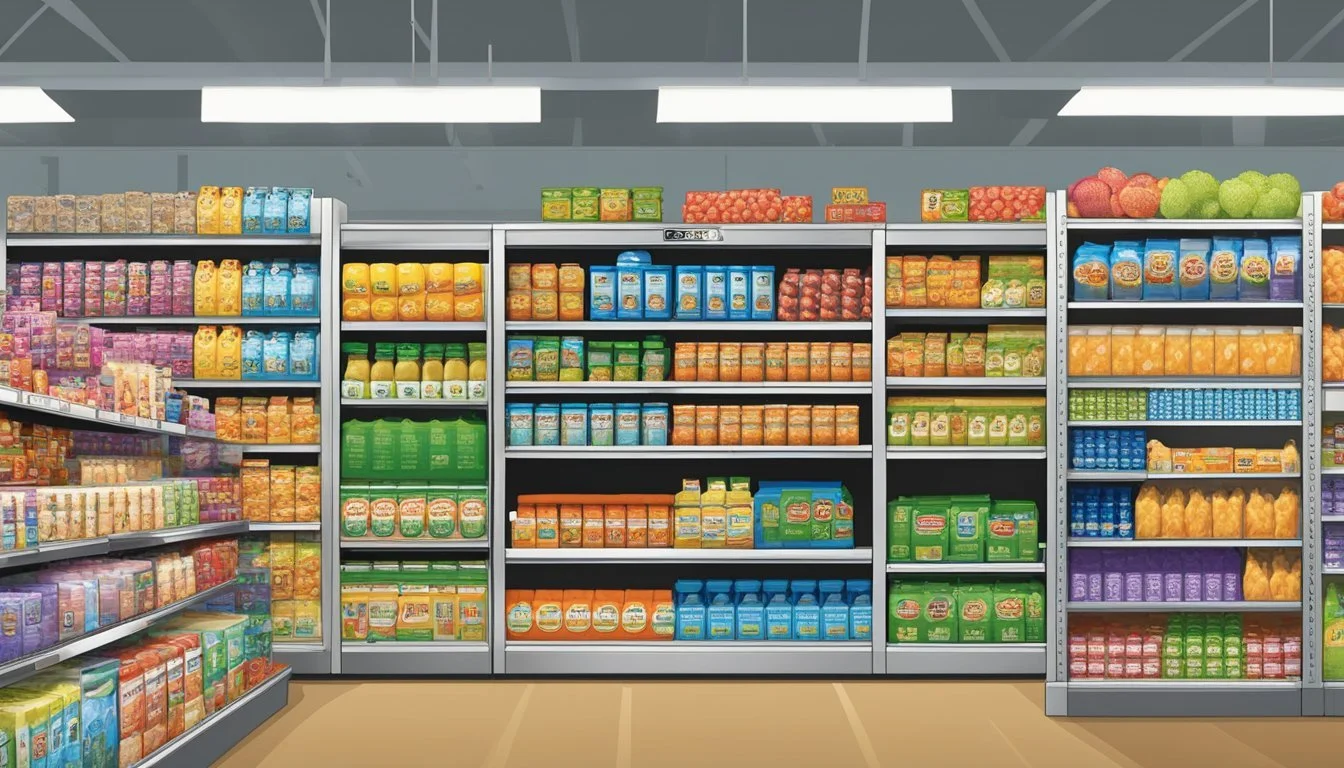Is Brookshire Grocery Company Cheaper Than Five Below?
A Price Comparison Analysis
Brookshire Grocery Company and Five Below cater to different consumer needs in the retail landscape. Brookshire's operates over 200 supermarkets across Texas, Louisiana, Arkansas, and Oklahoma, focusing on groceries and everyday essentials. Five Below, on the other hand, is a discount store chain selling products priced at $5 or less.
Due to their distinct product offerings and business models, Brookshire Grocery Company is generally not cheaper than Five Below for comparable items. Five Below's pricing strategy caps most products at $5, while Brookshire's carries a wider range of groceries and household goods at various price points.
Shoppers looking to save money may find better deals on certain non-food items at Five Below. For groceries and fresh produce, Brookshire's remains competitive within the grocery market, often running promotions like their "Buy 5 Save $5" mix-and-match offer to attract budget-conscious customers.
Overview of Brookshire Grocery Company
Brookshire Grocery Company is a prominent regional supermarket chain with a rich history and diverse store formats. The family-owned business has expanded its presence across multiple states while maintaining a focus on customer service and community engagement.
History and Growth
Brookshire Grocery Co. was founded by Wood T. Brookshire in Tyler, Texas during the Great Depression. The company started as a small store and gradually expanded throughout East Texas. Over the decades, Brookshire's grew into a significant regional player in the grocery industry.
Today, the company operates more than 200 stores across four states: Texas, Louisiana, Arkansas, and Oklahoma. This expansion has solidified Brookshire's position as a major employer and retail force in the region.
The company has remained family-owned since its inception, allowing it to maintain its core values and community-focused approach.
Store Formats and Brands
Brookshire Grocery Co. operates several distinct store formats to cater to different market segments:
Brookshire's: The flagship brand offering a traditional supermarket experience
Super 1 Foods: A discount grocery format focusing on value
Fresh by Brookshire's: An upscale concept with emphasis on fresh and organic products
Spring Market: Smaller format stores serving rural communities
This diverse portfolio allows the company to serve a wide range of customer needs and preferences.
Brookshire's also manages four distribution centers to support its retail operations efficiently.
Services and Customer Experience
Brookshire Grocery Company prides itself on providing exceptional customer service. The company emphasizes friendly interactions and a welcoming atmosphere in its stores.
Key features of the Brookshire's shopping experience include:
Weekly ads and digital coupons for savings
Pharmacy services in many locations
Fuel centers at select stores
Community involvement through local sponsorships and events
The company's commitment to service extends beyond the store, with active participation in charitable initiatives and support for local causes.
Brookshire's also offers modern conveniences like online shopping and curbside pickup at many locations, adapting to changing consumer preferences.
Product Range and Pricing
Brookshire Grocery Company offers a diverse selection of products at competitive prices. Their stores stock a wide range of food items and household essentials to meet various customer needs.
Food Categories
Brookshire's carries an extensive assortment of fresh produce, meats, dairy, and deli items. Their produce section features a variety of fruits and vegetables, catering to health-conscious shoppers. The meat department offers both fresh and packaged options, including poultry, beef, and pork. In the deli, customers can find ready-to-eat meals, sliced meats, and cheeses. The dairy aisle stocks milk, yogurt, cheese, and other essential items for families.
Private Label Offerings
Brookshire's has developed its own line of private label products to provide affordable alternatives to national brands. These store brand items cover a wide range of categories, from pantry staples to frozen foods. The company's private label offerings include kitchen basics, canned goods, snacks, and beverages. These products often come at a lower price point compared to name-brand equivalents, allowing customers to stretch their grocery budget further.
Price Comparison with Competitors
When comparing prices with other retailers, Brookshire's generally falls in the mid-range. While not always the cheapest option, they often offer competitive prices on many items. Walmart and Aldi typically have lower prices on some products, but Brookshire's may offer better deals on others, especially when factoring in sales and promotions. Kroger and Tom Thumb tend to have similar pricing structures to Brookshire's. For a family of 4, shopping at Brookshire's can be cost-effective, particularly when taking advantage of weekly specials and loyalty program benefits.
Overview of Five Below
Five Below is a rapidly expanding discount retailer in the United States. The company specializes in selling a wide range of products priced at $5 or less.
Five Below targets a young demographic, offering trendy items across various categories including toys, tech accessories, beauty products, and home goods. Their stores feature a vibrant, high-energy atmosphere designed to appeal to teens and tweens.
The retailer operates with a no-frills business model, focusing on keeping costs low to maintain its $5-and-below price point. This approach allows Five Below to offer attractive prices while maintaining profitability.
Five Below's growth strategy has been aggressive, with plans to triple its store count by 2030. The company has consistently opened over 100 new locations annually in recent years.
Store layout at Five Below resembles a treasure hunt experience, encouraging customers to explore different sections for unexpected finds. This format contributes to the retailer's success in driving impulse purchases.
Five Below's product mix evolves rapidly to stay current with trends, ensuring fresh inventory that keeps customers returning. The company's ability to quickly adapt its merchandise selection has been key to its popularity among young shoppers.
Economic Factors Influencing Pricing
Pricing strategies in retail are shaped by complex economic dynamics. Supply chain efficiency and volume purchasing power play crucial roles in determining costs and competitiveness for grocery stores and discount chains.
Supply Chain Efficiency
Supply chain efficiency significantly impacts pricing for retailers like Brookshire Grocery Company and Five Below. Efficient distribution centers reduce operational costs, allowing stores to offer lower prices. Well-managed inventory systems minimize waste and storage expenses.
Streamlined logistics networks enable faster product turnover, reducing holding costs. Advanced technology in distribution centers improves order accuracy and speed. Automated warehouses cut labor costs and boost productivity.
Effective supply chains also help retailers respond quickly to market changes. This flexibility allows them to adjust prices based on supply and demand fluctuations.
Volume Purchasing Power
Volume purchasing power gives larger retailers a significant pricing advantage. Chains with multiple stores can negotiate better deals with suppliers due to bulk orders. This translates to lower per-unit costs and potentially lower prices for customers.
Bigger companies often secure exclusive product deals or private label arrangements. These agreements further reduce costs and increase profit margins. Large retailers may also receive priority during product shortages.
Smaller chains may form buying groups to increase their collective purchasing power. This strategy helps them compete with larger competitors on pricing. Some retailers use their size to demand better payment terms, improving cash flow.
Consumer Perceptions and Shopping Behaviors
Price sensitivity and brand preferences significantly influence consumer shopping decisions. These factors shape how shoppers perceive value and choose between different retail options.
Spending Habits and Priorities
Economic pressures have altered consumer spending patterns. Many shoppers now prioritize affordability and savings when making purchasing decisions. According to recent surveys, 76% of U.S. consumers report changes in their food buying habits due to inflation.
Price-conscious shoppers are increasingly turning to discount retailers and generic products to stretch their budgets. This shift has benefited stores like Five Below that emphasize low prices.
Consumers are also becoming more strategic in their shopping behaviors. Many actively search for deals, compare prices across stores, and use coupons to maximize savings.
Brand Loyalty and Trust
Brand loyalty has been tested as consumers explore new options to manage costs. Studies show 75% of U.S. shoppers have tried new brands or retailers in response to economic pressures and changing priorities.
Despite this trend, established grocery chains like Brookshire's can still cultivate loyalty through quality, service, and community engagement. Their core values and local roots may resonate with long-time customers.
Trust plays a key role in shopper psychology. Consumers often perceive higher-priced items as better quality. However, discount retailers can build trust by consistently delivering value and positive experiences.
Comparative Analysis
Comparing Brookshire Grocery Company and Five Below reveals key differences in product offerings, pricing strategies, and store layouts. These factors impact the overall shopping experience and value proposition for customers.
Cost vs. Quality Considerations
Brookshire Grocery Company focuses on groceries and household essentials. Their prices are generally competitive with other supermarkets. For staples like milk and cheese, Brookshire's often offers good value.
Five Below, in contrast, maintains a strict $5-and-under price point for all items. This results in lower prices overall, but potentially lower quality for some products. Five Below's merchandise tends to be non-perishable novelty items rather than groceries.
The quality-to-price ratio differs significantly between the two retailers. Brookshire's provides fresh produce and name-brand groceries at standard supermarket prices. Five Below offers budget-friendly trinkets, accessories, and snacks.
Variety and Store Layout
Brookshire Grocery Company stocks a wide range of food items, cleaning supplies, and health products. Their stores feature typical supermarket layouts with clearly organized aisles and departments.
Five Below's inventory is more eclectic, including toys, games, tech accessories, and home decor. The store layout is designed for browsing, with frequently changing merchandise displays.
Brookshire's larger footprint allows for a more comprehensive grocery selection. Five Below's compact stores focus on high-turnover, trendy items. The shopping experience at Brookshire's is task-oriented, while Five Below encourages impulse purchases and exploration.
Conclusion
Brookshire Grocery Company and Five Below cater to different market segments with distinct product offerings. Brookshire focuses on groceries and household essentials, while Five Below specializes in trendy, low-cost items.
Direct price comparisons between the two retailers are challenging due to their divergent product ranges. Brookshire may offer better value on food and everyday necessities. Five Below, however, provides affordable options for discretionary purchases.
Both companies prioritize customer service and community engagement. Brookshire's local focus and Fresh by Brookshire concept demonstrate its commitment to enhancing the shopping experience. Five Below's fun, treasure-hunt atmosphere appeals to bargain-seeking customers.
Ultimately, the "cheaper" option depends on specific shopping needs. For groceries, Brookshire likely offers competitive prices. For inexpensive gifts or trendy items, Five Below presents budget-friendly choices.
Shoppers may benefit from utilizing both retailers, leveraging Brookshire for groceries and Five Below for affordable non-essential purchases. This approach can help maximize savings while meeting diverse consumer needs.









